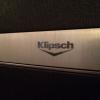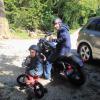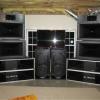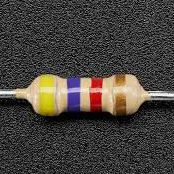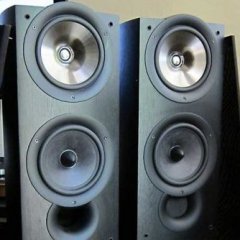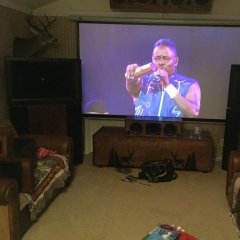Leaderboard
Popular Content
Showing content with the highest reputation on 04/07/16 in all areas
-
That's at 300 %, it would be nice to see it at the normal rate, either way I wouldn't want to be in it5 points
-
My motto about my jeans I wear a size 34 But a 36 feels so good I go ahead and buy a 384 points
-
Oddly enough, I have that exact set up! The 12" Dayton with Heresey's sitting on top. Used the 8 ohm version since I wanted to drive two with one amp. Sound great together. I did port mine though.4 points
-
Random, but after a large earthquake we had in January the usgs released this video of what a local "high rise" looked liked during the 7.1 quake. They've equipped the building with accelerometers to measure the amount of movement. I think it's remarkable. https://www.adn.com/article/20160405/how-anchorages-atwood-building-shook-during-january-s-71-quake4 points
-
4 points
-
Sometimes our ideas sound good. Other times, not so much. This was an utter failure. This idea sounds like crap when implemented. You are welcome, the water has been tested and decidedly unfit for human tolerances BACK TO STOCK...3 points
-
Putting out a feeler to figure interest. Wondering if there is work I can can do for you guys. We have a few fellows here doing xover work, and horn lens work and other speaker /mod/ upgrading services. I think we also have at least one doing perforated metal grill work. I want to ask if there is a need for woodwork, basic speaker cabs, Baltic birch or out of ordinary hardwood, (not yet veneer experienced) and wood cases for Amps, pre's, any thing similar. Speaker bases , stands, possibly component shelving's, etc. Not yet like complex folded horns or Tubas, not yet at least. I am 59 yrs old, and have been a maker/ builder all; my life. Have designed and fabbed entire full console, rails, antenna/ light arch, etc. in a Boston Whaler 17' commercial glass layup bare hull. '76 Jeep CJ5 with my 14 yr old Son,from bare frame on sawhorses, my daily driver for 12 yrs, , 2700 hours in a Bus Conversion RV, two full sets from scratch custom kitchen cabs, one of glued up Ash all shelves and carcasses, custom steel railings for stairs and full loft, ground and clearrcoated finish ,plus many more projects. That's like my Thing. Multimedia - Solid wood, Ply, Steel, some Al, a little Acrylic, and various finishing. Lacquer, Multi coat Varnishes,High gloss wetsanded and buffed "Piano finish" Polyester, etc. Steel welding included. I am very detail oriented and perfectionist. I can't do everything, but please ask what you envision, and I'll be honest if I can do it, or not. I am looking to ask, if I could do very good work, for reasonably under "market rate", would you guys have any for me? I mean on an ongoing part time ballpark basis to net me like $500 - $800/ month. I am not looking to do a full time biz, "Home", but very tooled shop,so I can do truly "under market" pricing. Partial disability and job change has lowered my expectations. I would be happy to do the first few jobs at like no or little profit to prove myself, ----- asking only for full honest feedback on the board. You no like - You no pay. The real deal is - With life changes, I am REALLY wanting to do this. Very important to me. VERY important to me. I need my Life back after real estate bubble bursting stuff. Please comment, Thank you all, Lars3 points
-
3 points
-
The tops do tend to get a little scratched when you place them upside down on the bare floor.2 points
-
I love a person who is willing to try something like this. People can argue and postulate and calculate and hypothesize, but when it comes down to it, performing the actual experiment is the only way to find a decisive answer. Great job! IMO, porting can be done without damage if you use the block you made if there is enough room to turn the port before it hits the driver. If you want, go for it...2 points
-
2 points
-
2 points
-
From my understanding, B Stock are when the wood finish doesn't match the exact grain pattern with the paired speaker. To some people, consecutive serial numbers are a big deal. Never bothered me at all to not have consecutive serial numbers.2 points
-
How much are you getting the 12" for? I have owned the 10" and 12" models. Both are kind of weak in my opinion. You have towers that can put out a lot of bass why not srpings for the 15". It's dogs way lower and has way more output. I maxed the 10" and 12" out no problem in my living room which is 11x17. I mean if your going all out then go all out. Trust me if you don't, not too long from now you'll wish you had2 points
-
So, I took advantage of the big discounts on Palladiums and ordered a set of P-37’s, along with the center and surrounds in Merlot. I did not order the sub as it is just too big for me and I already had the RT-10D, which is excellent and compact. The Palladiums replace KLF-20s/C7 and KSP-S6 surrounds. They arrived roughly a couple weeks ago. I am driving them with a Denon AVR-X6200W, and I use Audessey room correction. After many years of tinkering, I had my KLF-20’s really, really dialed into my room and they sounded beyond excellent. My expectations for the Palladiums were better looks, slightly better mids/highs, slightly better imaging, and significantly better center integration/matching. I had my doubts about bass, but given I am running a good sub, I was confident I could get the bass dialed in and would be at least as good. In short, my hope was that these would provide the best sound I have ever heard. (No pressure, haha). The first thing to happen was that my RT-10D subwoofer inexplicably died right at the beginning, so it is in the shop, and I am without sub. When I first turned them on (no sub, no Audessey), I immediately noticed that the P’s had potential, mids/highs were smoother and clearer, and I was very surprised by the quality of the bass. But I knew I had some work to do to get the P’s dialed into my room. Now, I have to say again, the previous KLF-20s were really dialed in, so I had a good idea of the sound I was expecting. After two weeks and probably 20 hours of adjusting speaker positions, running Audessey, dozens of times, with multiple Audessey mic patterns, multiple speaker positions, and driving my wife crazy, last night it finally clicked. And Oh. My. God. It was goose-bump-city all evening. Yes, this is the best sound I have ever achieved in my house. Here are my a few tracks that I use to know if I am dialed in: Blue Ray: I use the movie “Battleship”. This movie has tremendous sound effects. When the alien ship breaks up and slams into earth, the explosion effects are supreme. When a piece of the alien ship slams into a glass skyscraper the explosions and smashing glass is incredible. I expect this to improve when I get my sub back, but I am pleasantly surprised how good the P’s perform without the sub. Music: Mark Knopfler – Album: Golden Heart, Track: Golden Heart. This song has some delicate guitar, delicate vocals, along with bass note that has always been a challenge to get sounding perfect in my room. Greg Brown – Album: Down In There, Track: Hillbilly Girl. This song has acoustic guitar, a delicate deep simple drum beat, and vocals that that will sound grating/awful if my midrange is not dialed in. Yarn – Album: Yarn, Track: Listen Up Sweetheart. This song has acoustic bass, steel guitar, mandolin, gentle snare drum and a certain spaciousness that I look for. Many others, but I use the above ones because I am very familiar with them and they tell me when something ain’t right. Overall happy camper here! Pics:2 points
-
2 points
-
I hate when the jeans I wore with comfort last week are a little too tight today.2 points
-
2 points
-
Introducing the 70th Anniversary Edition of the Klipsch Heresy III speaker... The 70th Anniversary Heresy III is limited to a production run of only 70 pairs of speakers, so if you don't get them now, you are going to miss out. (Seriously, these are going to go fast.) These handcrafted speakers are available now from Klipsch.com and select dealers. New Features: Australian Walnut Wood Veneer Book-Matched Wood Veneer Heresy Logo Nameplate Silver Lust Grille Cloth Matte-Black Slant Riser1 point
-
I'm pretty sure all I was able to accomplish was brushing my teeth in the time it took you to do all this.1 point
-
I need to get it figured out, but I did set the 7's to small and set the crossover as high as 80hz and still experiencing the same problem. Tomorrow I'm going to hook the Onkyo back up and see what the sub out and setting's that I'm familiar with result in and go from there. Right now and for the rest of the evening, I'm going to just enjoy the Sansui, 7's and the F-20 because it's absolutely beautiful so I'm in silver lining mode currently or should I say silver lining, Cabo and the silver bullet! Tomorrow is another day. F-20 is a great sub and I can't state that enough, the clarity in the low bass is phenomenal.1 point
-
Sabine Shmitz was a name I'd never heard, but she seems to be well-known to fans of the Nurburgring. It turns out that she's a taxi driver, specializing in hot laps around the 'Ring, and she's done many thousands of laps. The track has a number of taxis that take tourists around, in case they don't feel up to mixing it up with some of the wild traffic that seems to be a feature of the place. In this clip, she seems to have been born to do this job. https://www.youtube.com/watch?v=_tG3Tx1e704&nohtml5=False1 point
-
I agree that F1 is getting away from racers being drivers to being systems operators who do some driving, too. This look at the steering wheel makes it really obvious, as you say. F1 steering wheel explained: http://www.wired.com/2014/05/formula-1-steering-wheels/ I'm also a big fan of Vale, and I think he was robbed. I hope this season has a more fair resolution.1 point
-
You attributed lack of bass to the difference in speakers not the difference in amps correct? I have a Stereo 15 amp from Justin on a pair of Cornscallas and there is absolutely no lack of bass there. lack of bass ( base) ( bass looks funny... like the bass fish...) is because LaScalas low freq cut off is around ~ 40 hz and starts at~ 50. This is because they were purposed for loudspeakers more than to be used as a means to play High Fidelity music. They sound good, don't misunderstand. BUT... When compared to Khorns.... well they don't compare in the realm of HiFi music reproduction. Your Cornscallas will certainly have better base than LaScalas. The folded horn of the Khorn takes BASS to the next level. Have you listened to Khorns set up with good equipment ? When I did, I could not believe my ears. Far better than the Snells of old. SNELLS were reference quality used to determine if this violin or that piano was up to speed. They were used for chamber music reproduction. That is not easy to do. Actually, the OP has already had a single-ended amplifier (the Big Ben is based off the Shannon Parks Clementine single-ended circuit and modified for the 6L6 or KT88 series of tubes) in his system; however, from the posts above, it seems to have some trouble driving the bass below the horn cut-off on the La Scala, which I would expect once transitioning to the frequency range below the horn cut-off, but appears to be fine in the Klipschorns. Part of what I see as problematic (and potentially leading to what appears to be frustration for the OP and others posting) with this thread is that the thread started out as a type of general critique of Rod Elliott's white papers on tubes and solid state then evolved into a tube amplifier hunt with no specific criteria or objective in mind. For example, what makes this a very difficult situation is that I cannot find where there has been any identification of the specific negative characters of sound that the OP doesn't like with the Yamaha 1030. In many respects this is like going to the doctor and just stating "Doc, I don't feel well today, treat me." Without a specific understanding of what is currently viewed as wrong (or lacking or could be improved upon) with the sound with the Yamaha 1030, it is impossible to diagnose and make any type of recommendation that would even be remotely useful. The aspect of having no specific goal is why I haven't directly responded to anything and only provided a few posts on various types of amplifiers and topologies where I had some direct experience. It seems that every time the kids come to me for advice, I end up asking them, "what are you trying to specifically accomplish and how do you believe these steps will be important in getting you there"?1 point
-
Finding out how to do this is eluding me. I have Dave's (wvu80) Sherbourn AVR, and the front infra red sensor isn't working. The remote is fine. There is hope... The back of the AVR has those minijack sized IR Input and IR Output ports. I think to make them work, there would need to be an extender with a terminal block, and then a stereo minijack going from that block into the IR Input port. I know Dave doesn't want to spend the money on education, so I thought I would ask all you. Is this right?: [iR sensor]-----> [terminal block] <-------stereo male to male jack-------> [iR Input on Sherbourn] edit: This http://www.amazon.com/Hidden-IR-Repeater-System-Install/dp/B005P14NU2/ref=sr_1_19?s=aht&ie=UTF8&qid=1459995094&sr=1-19&refinements=p_n_feature_keywords_browse-bin%3A2889592011%2Cp_72%3A1248879011 with a stereo male to male patch cord into the Sherbourn IR Input.1 point
-
Nice post, Craig, lot to agree with there. I would say that if the goal is to use your tube amp as some sort of ear-friendly compressor, then the little single ended jobs' monotonic distortion pattern beats the odd predominant pattern of pp amps. It seems to me that 2Bmusic wants more tube coloration, as opposed to your "bigger window" approach that yields less tube coloration, which seems to reflect his tube dabbling thus far.1 point
-
1 point
-
1 point
-
Just 8 screws and the sub is easily returned to stock configuration. Wouldn't think of altering or damaging the cab in any way. The port will be run through the blank plate I made. If it don't work out, 8 screws and done1 point
-
For experimenting just add a adjustable sliding straight port out the back and if you find it acceptable then build your final design. Makes it easy that way. Tinkering is fun if nothing else.1 point
-
No need to have a spare with this experiment because he's making non-destructive edits to the sub. He can easily put it back together the way it was originally designed.1 point
-
I have read many times that old tapes have to be "baked" to get them to play properly. What's that about? Did you have to do that?1 point
-
1 point
-
With a phone number given, and a definitive price posted (regardless of being perceived as fair or not) I'd say let it run. Now if they were $125 with an oddball gmail account - by all means flag it / them my $0.02 - ymmv1 point
-
To a lot of people, everything has to be perfect, matching grain, serial #s, etc. It's never mattered to me, but my Heritage gear is all matching LOL GLWS Mark1 point
-
I was the lucky soul........3.5 hrs drive and 1100. They are perfect! 10/10 We require pics!!1 point
-
Load this up in her.car, I actually like this song, https://youtu.be/lIeY4S1h79Q The other I can live with is Sweet Caroline at Fenway1 point
-
1 point
-
Feel free to shop outside of Klipsch for your subwoofer too. Not like you have to timbre match the sub....and Klipsch is not a great subwoofer manufacturer in my opinion.1 point
-
The .707 RMS is factored in before arriving at the max power of an amplifier (at least it should be). So if they measured 171 watts then that is what your amplifier made. Many manufacturers under rated the max power of amplifiers so they can boast better distortion numbers at full rated power. I've read that Nakamichi PA-7 amplifiers that are rated at 200 watt RMS actually can put out 370 watts per channel, but have never measured them. Roger For how long? I would think a 50 millisecond peak might be possible at an even higher power out, whereas the un-flattened top of a steady tone sine wave power for 200 RMS would be about 283 watts (283 x .707 = 200 watts). In the oldest catalogs I've seen, a tube amp "peak power" is typically 2x (3 dB) the RMS power. Some modern "dynamic power" ratings are about 3 dB higher than RMS, but I've never seen the duration specified. The other question re: RMS is, "at what frequency?" Is it at 1KHz? Or 30 Hz (PWK's suggestion)? Or with band limited pink noise, 500Hz to 2KHz? Over the desired bandwidth (e.g. 20 Hz to 20K hz)? Someone a few years ago posted here that it is an error to talk about RMS power at all. I was actually looking into trying to find more detailed information regarding peaks and better substantiate an average time of a peak or even a range; however, I realized that it seems mostly impossible to get enough information to remotely establish any comparability or reliability in any of the published numbers. Here one "standard" definition of a "dynamic headroom" test that I considered in some of my responses in this thread along with gathering a few more insights into transformer and capacitor ratings used in power supplies, in addition to power calculations. I found the Myers Sound paper below meaningful. "The EIA RS-490 (former IHF A-202) amplifier test standard includes a "dynamic headroom" test employing a 20-mS tone-burst. In an informal survey of musical recordings, power bursts were found with durations from a few milliseconds up to several hundred milliseconds, with an apparent clustering in the 80-200-mS range. Since the practical value of an amplifier depends on its ability to reproduce musical dynamics, a more useful power rating would be obtained by amending the dynamic headroom test to employ a 200-millisecond (or similar) tone-burst." http://www.aes.org/e-lib/browse.cfm?elib=4898 Excerpt from Myers Sound. [in the engineering community, the accepted method of generating a rating of the audio power produced by an amplifier is to connect it to a known load, apply a continuous sine wave signal to its inputs, and monitor its output behavior into the load. This is important to keep in mind as we examine the definition and measurement of “power.” The definition of instantaneous electrical power is quite simple: P = EI, where P = instantaneous power in watts, E = potential difference in volts, and I = current in amperes. However, this definition is minimally useful to us in an audio application because audio sources are not instantaneous pulses, nor are audio loads purely resistive. A sine wave is the building block from which real-world audio signals are built, making it a more appropriate source signal for measurement of an audio system. For a sinusoidal voltage source, power, while still measured in watts, is defined as“average power.” RMS (root mean square) is a method of calculating the voltage and current to obtain the average power. For example, if we look at the sine wave voltage at the output terminals of a power amplifier, we will find the RMS voltage to be the peak voltage (Epeak) divided by the square root of 2. If we measure the RMS sine wave current from the amplifier, we will see that, similarly, it is the peak current (Ipeak) divided by the square root of 2. Multiplying the two, we get: (E peak /(sq root 2)) * (I peak /(sq root 2)) = (E peak * I peak)/2 which is the average power for a sine wave. When an amplifier is rated in RMS watts, this is a shorthand way of saying “average watts obtained by the RMS method.” If you use a signal other than a sine wave, you must use a meter reading ‘true’ RMS voltage to obtain the correct average power. So what about peak power? Peak power is a special case where Ppeak = Epeak * I peak. For a sine wave, this is always twice the average power. A major problem with using this rating, however, is that many power amplifiers cannot maintain peak power for more than a few milliseconds. The standard method of testing a power amplifier to see if the power supply can maintain continuous peak power is to connect all channels of the amplifier into load resistors, drive the amplifier’s input with a square wave and monitor the peak voltage at the outputs. Almost all power amplifiers will ‘sag’ in output power under this drive condition. Now, having a power amplifier produce twice the continuous sine wave power is hardly necessary for music reproduction, but sometimes music signals produce short-term square wave or large sine wave-like waveforms. So how long should a power amplifier be able to maintain reproduction of a square wave or sine wave at full amplitude?] http://www.meyersound.com/support/papers/amp_power.htm1 point
-
Tim, Extra prayers tonight and tomorrow. Thanks for the update. Bill1 point
-
1 point
-
1 point
-
1 point
-
So, Hope, AR is just a jump, a hop and a skip for you! hop, skip, jump, a quick flight and a reasonable paddle... Just look out of curiosity and I can get from Anchorage to Texarkana, AR in just over in a reasonable 15 hours and 14m (5 hrs of layovers) with two stops. Not bad! So what is your excuse???? I DROVE 16 hours one way last year!!! Busted! Looks like you have no excuses Dave!1 point
-
1 point
-
1 point
-
I have owned many speakers over the years, M&K, Linn (Aktiv), Magnepan, Castle, are a few, but the Palladium P17Bs are by far the most live sounding, accurate, lowest distortion, speakers that I have heard. I could not be happier and I highly recommend them. I don't have the room for Klipsch's larger speakers so not trying to start that debate. I am sure they are fantastic.1 point
-
I use two of these as subwoofers in my Cornwall theater. I lucked out and got them from a JBL "tent sale" years ago (survivors of the Northridge earthquake IIRC). I use a parametric EQ to smooth out the response, and get impressive performance down to 25 hz. While not truly "subwoofers" in a true technical sense, they function very well as such - having tried other subwoofer options before settling on these. As for power compression, the 3.2db is at the 800W rated power - when using two of them in a 14 x 24 foot room, it's akin to using a nuclear bomb as a flyswatter - so they never see that kind of power here. They have an easy life in the current roomspace, never needing to work very hard to do what I need them to do. They add tremendous scale to the audio performance, and I could never match the performance at multiples of what I paid for mine.1 point





